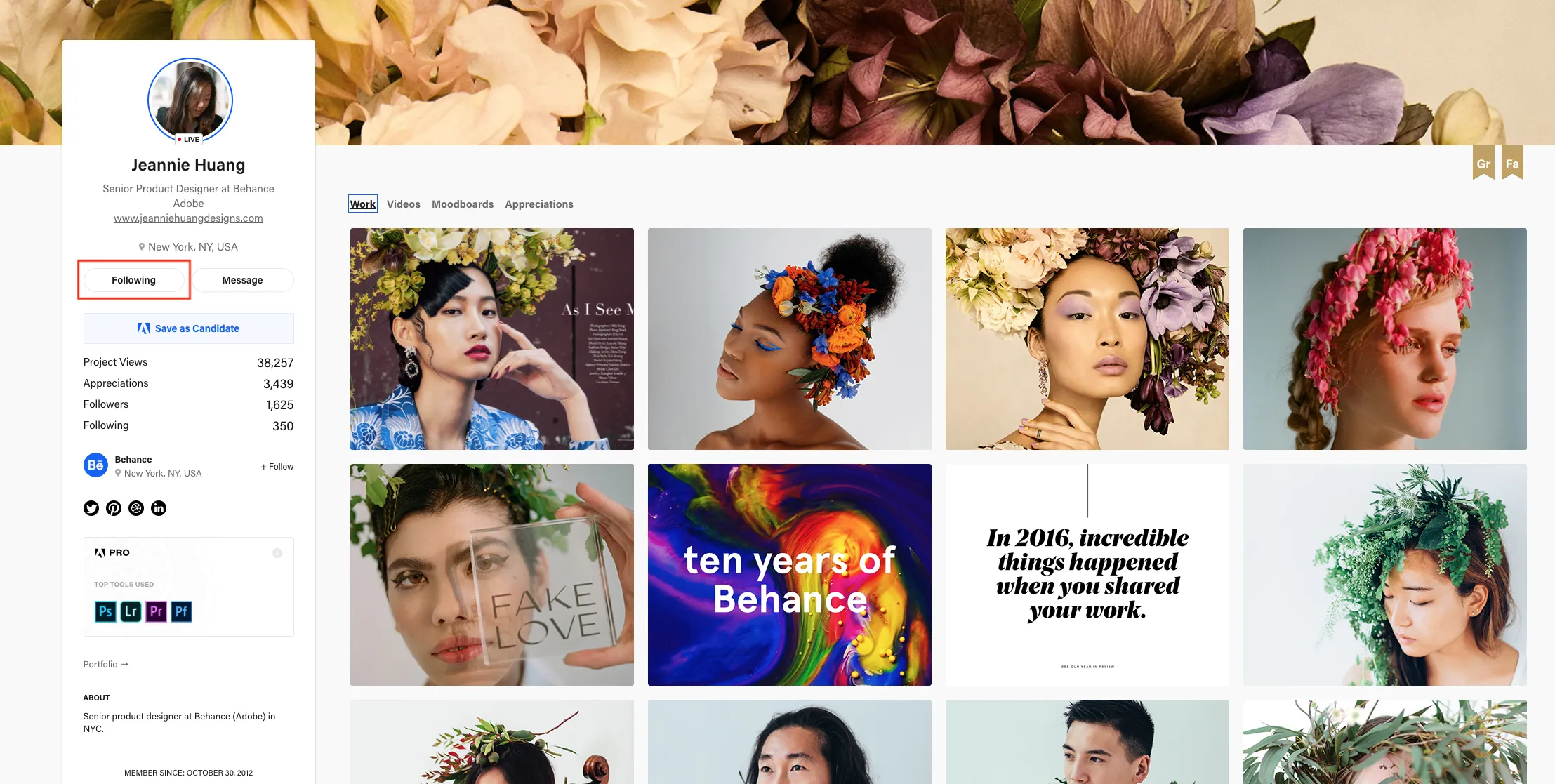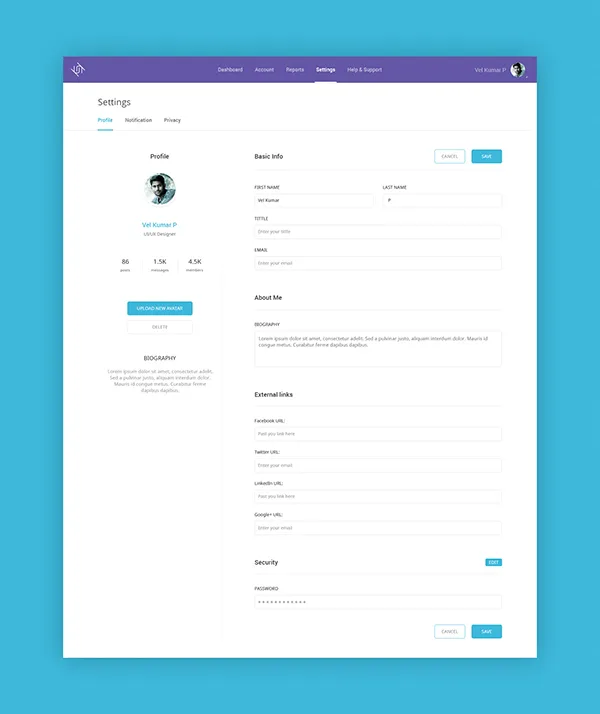In the world of creative professionals, your online presence can make or break your opportunities. Behance has emerged as a powerful platform for showcasing your work, connecting with other creatives, and attracting potential clients or employers. But how do you ensure that your Behance profile stands out in a sea of talent? In this post, we’ll explore the ins and outs of polishing your
Understanding the Importance of a Professional Behance Profile

When it comes to showcasing your creative work, having a polished Behance profile is crucial. Think of it as your digital portfolio, and we all know how important first impressions are! Here’s why a professional profile matters:
- Credibility: A well-crafted profile enhances your credibility as a creative. Potential clients and employers are more likely to trust someone who puts effort into their presentation.
- Visibility: Behance is a platform where creatives can discover each other. A professional profile with high-quality projects is more likely to be featured and seen by a wider audience.
- Networking Opportunities: When your profile looks polished, it invites engagement. Other creatives and potential collaborators are more inclined to reach out, leading to valuable networking opportunities.
- Showcasing Skills: Your profile is a canvas to demonstrate your skills. A well-organized and visually appealing presentation can highlight your best work effectively.
- Attracting Clients: If you’re looking for freelance work, a professional Behance profile acts as a portfolio that potential clients can browse through. The more professional it looks, the more likely clients will want to hire you.
In summary, a professional Behance profile is essential for establishing your brand, showcasing your skills, and making meaningful connections in the creative industry. So let’s dive in and explore how to polish your profile to achieve these goals!
Also Read This: 5 Essential Web Tools for Small Business Owners
Steps to Enhance Your Behance Profile

Creating a standout Behance profile is essential for showcasing your creative work and attracting potential clients or collaborators. Here are some actionable steps to enhance your profile:
- Choose a Professional Username: Your username is the first thing people see. Opt for something that reflects your brand and is easy to remember.
- Add a High-Quality Profile Picture: A clear, professional headshot makes a great first impression. It helps to humanize your profile and makes you more relatable.
- Craft a Compelling Bio: Your bio should be concise yet informative. Highlight your skills, experience, and what makes you unique. Don't forget to mention your location and the types of projects you're interested in!
- Feature Your Best Work: Select a handful of your best projects to display prominently. Quality over quantity is key here—choose pieces that showcase your skills effectively.
- Regularly Update Your Profile: Keep your profile fresh and engaging by adding new projects and updating your bio as you gain more experience. A stagnant profile can deter potential clients.
- Engage with the Community: Behance is not just a platform for showcasing work; it's a community. Comment on others' projects, follow artists you admire, and participate in discussions to build your network.
Also Read This: Imago Stock Photos: Stunning Website Content
Optimizing Your Portfolio Projects

Your portfolio is your virtual showcase, and optimizing your projects is crucial for making a lasting impression. Here’s how to do it effectively:
- Use High-Quality Images: Ensure that your project images are high resolution. Blurry or pixelated images can detract from your work's professionalism.
- Write Detailed Descriptions: For each project, include a brief description that outlines your role, the objectives, and the outcomes. This helps viewers understand the context behind your work.
- Incorporate Process Shots: Showcasing your process can be incredibly valuable. Include sketches, drafts, or behind-the-scenes photos to give viewers insight into your creative journey.
- Utilize Tags Wisely: Use relevant tags to categorize your work effectively. This makes it easier for users to find your projects through search and increases visibility.
- Link to Live Projects: If applicable, provide links to live versions of your projects. This allows viewers to experience your work firsthand and adds credibility to your portfolio.
- Solicit Feedback: Don’t hesitate to ask friends or colleagues for their honest opinions on your projects. Constructive feedback can help you improve and make your portfolio shine even brighter.
Also Read This: Learn How to Change Template Size in Canva
Choosing the Right Profile Picture and Cover Image
Your profile picture and cover image are often the first things potential clients or collaborators notice when they visit your Behance profile. It’s essential to make a great first impression, and the right visuals can help you do just that. Here are some tips to consider:
- Profile Picture: Choose a clear and professional headshot. Ideally, it should feature just you, smiling and looking approachable. Avoid using group photos or images where you’re too far away.
- Lighting: Good lighting can make a world of difference. Natural light is your best friend, so try to take your photo in a well-lit area. Avoid harsh shadows or overly bright spots.
- Background: Keep it simple! A plain or neutral background ensures that the focus remains on you. Busy or cluttered backgrounds can be distracting.
- Cover Image: This is your chance to showcase your style. Use an image that reflects your work and personality. It could be a standout piece from your portfolio or an original artwork that resonates with your brand.
- Consistency: Ensure that your profile picture and cover image align in terms of color, style, and theme. They should give visitors a cohesive feel of your brand.
Remember, your profile picture and cover image should not only represent you but also resonate with the type of work you want to attract. Take your time, choose wisely, and don’t hesitate to ask for feedback from peers!
Also Read This: Can Employers See If You Viewed Their LinkedIn Profiles?
Writing an Engaging Bio
Your bio is a crucial element of your Behance profile. It’s your chance to tell your story, communicate your skills, and connect with your audience. Here’s how to craft a bio that stands out:
- Start with the Basics: Begin by stating your name and what you do. For example, "Hi, I’m Jane Doe, a graphic designer specializing in branding and visual identity."
- Highlight Your Experience: Share relevant experience or education. This could include your years in the industry, notable projects, or clients you’ve worked with.
- Show Your Passion: Talk about what drives you in your work. A personal touch can make your bio more relatable and engaging. For instance, "I have a passion for creating designs that tell a story."
- Use Keywords: Incorporate industry-relevant keywords to help your profile appear in search results. Think about what potential clients might be looking for.
- Be Authentic: Let your personality shine through. A conversational tone can make your bio more inviting—don’t be afraid to show a little bit of your character!
Finally, keep your bio concise and to the point—around 150-200 words should suffice. You want to capture attention without overwhelming your readers. Keep it fresh and consider updating it regularly to reflect your evolving skills and experiences!
Also Read This: How to Make Coffee in a Coffee Maker Easily
7. Networking and Community Engagement
Networking and community engagement are vital components of building a successful Behance profile. It’s not just about showcasing your work; it’s about creating connections that can lead to new opportunities and collaborations. Here are some effective ways to foster relationships within the Behance community:
- Follow other creatives: Start by following artists and designers whose work resonates with you. This not only keeps you updated on their latest projects but also opens the door for them to discover you.
- Comment and provide feedback: Take the time to leave thoughtful comments on others' projects. This shows that you value their work and are engaged in the community.
- Join groups and forums: Participate in Behance groups that align with your interests. These spaces are perfect for sharing insights, asking for advice, and connecting with like-minded individuals.
- Attend virtual events: Behance often hosts events and webinars. Attend these to learn from industry leaders and meet fellow creatives.
- Collaborate on projects: Reach out to other creatives for potential collaboration. Working together can lead to innovative results and expand your network.
Remember, building relationships takes time. Be genuine in your interactions, and you’ll likely find that the community is more than willing to support you in return!
8. Regularly Updating Your Portfolio
Your Behance portfolio is a living document that should evolve as you grow in your creative journey. Regular updates not only keep your profile fresh but also demonstrate your ongoing commitment to your craft. Here are some tips on how to effectively update your portfolio:
- Showcase new projects: Whenever you complete a new project, add it to your portfolio. This keeps your work current and shows potential clients that you are active and engaged.
- Refine older projects: Don’t hesitate to revisit and improve older pieces. Perhaps you’ve gained new skills or insights that can enhance a project.
- Highlight diverse skills: As you learn new techniques or expand your skill set, ensure these are reflected in your portfolio. A diverse range of skills can attract a wider audience.
- Remove outdated work: If certain projects no longer represent your best work or align with your current style, don’t be afraid to remove them. Quality over quantity is key!
- Solicit feedback: Reach out to peers for constructive criticism on your updated portfolio. Fresh eyes can provide valuable insights that you might have overlooked.
By regularly updating your portfolio, you not only enhance your professional image but also keep the excitement alive in your creative endeavors. After all, your portfolio is a reflection of your artistic journey!